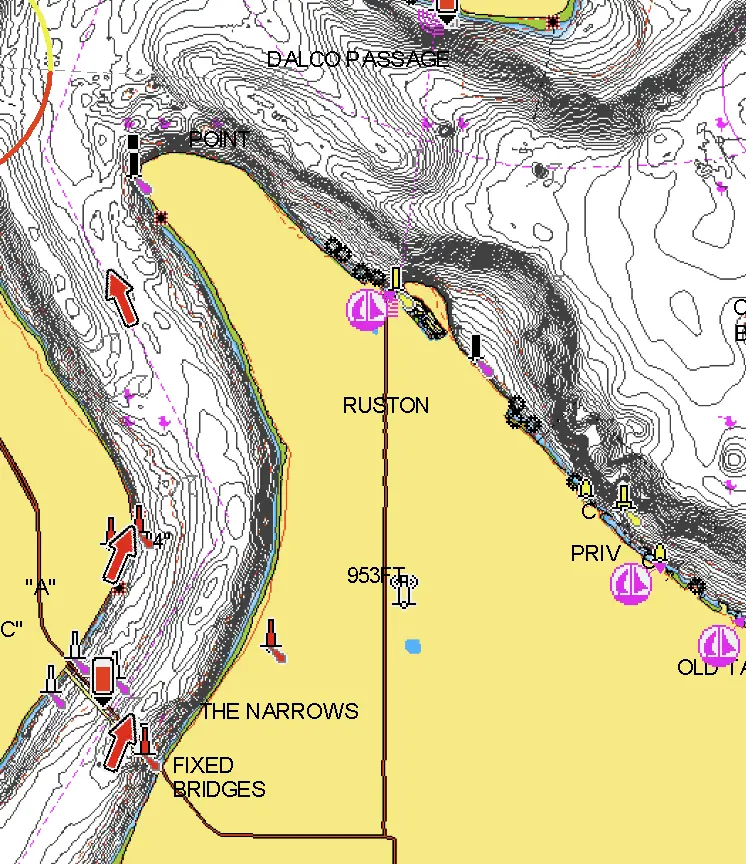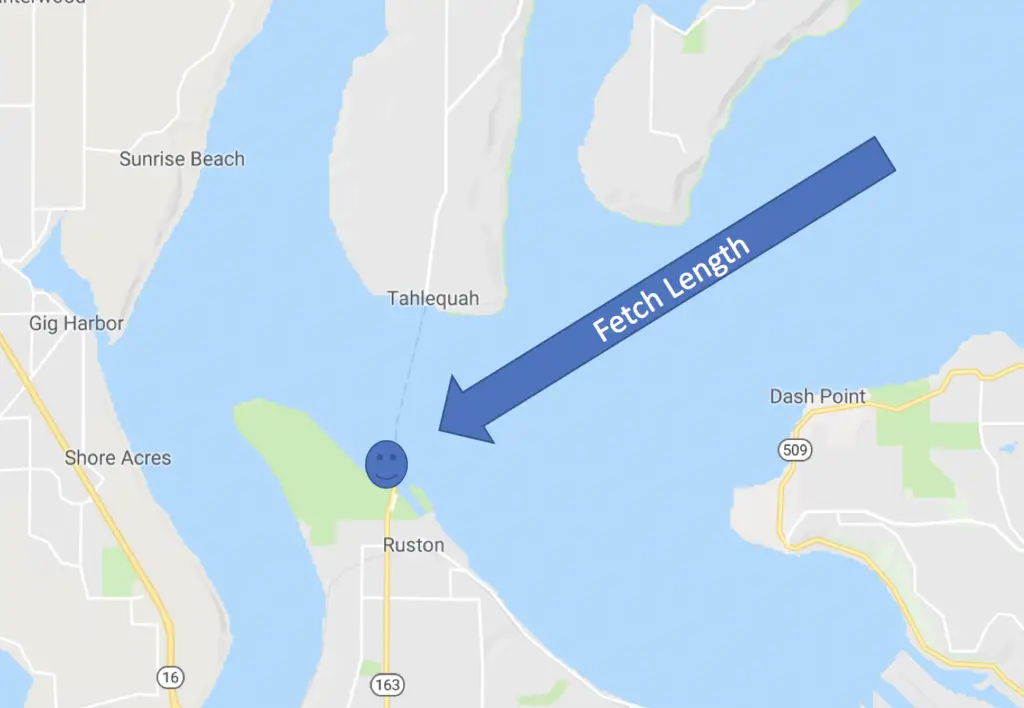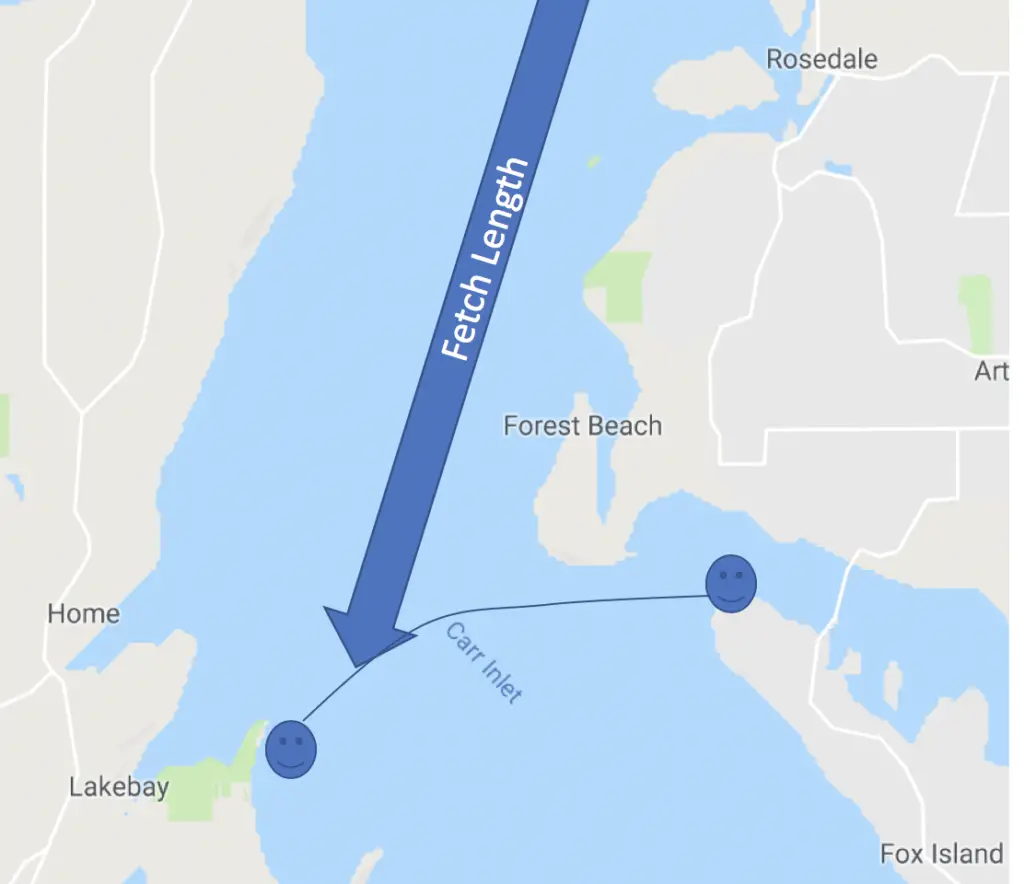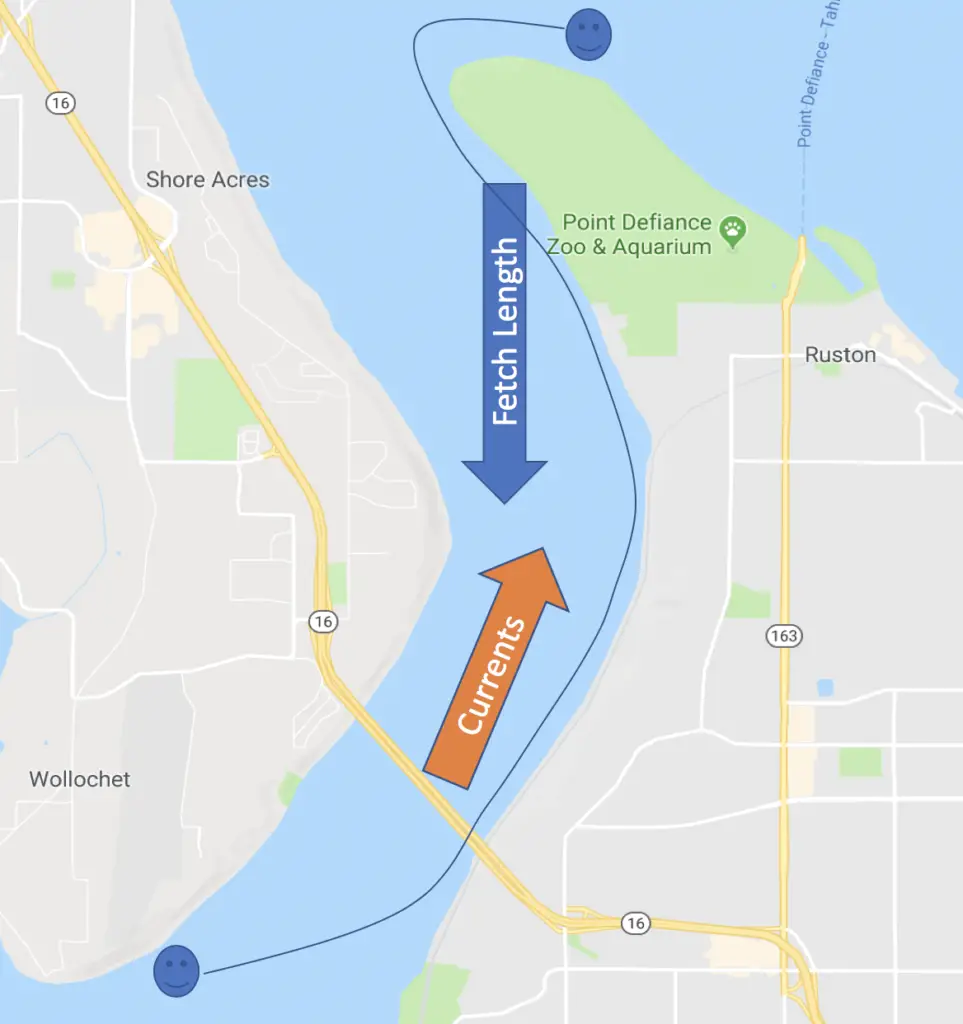
Chasing salmon in the winter time in Marine Area (MA) 13 and 11 required navigating some windy conditions, but ultimately yielded the rewarding experience of hooking into winter blackmouth on light tackle.
After Snowpocalypse 2019, I was dying to get out. It’s not like the reports were so compelling that you just had to be on the water, but rather the desire to get out for the sake of being out overrode everything else.
In fact, I was the only rig at the Point Defiance boat launch pretty much all day. As I prepared to cut lines, my boat was already bobbing and swaying from the wind in the disturbed usually calm water of the launch area.
Looking up, Old Glory was stiff and rippling in the steady wind coming from the NNE direction. Checking my weather app, it told me to expect 10-15 mph winds, which is about what I was experiencing.

Now when it comes to planning a trip in marginal conditions, wind speed and direction are only the start of the process in determining a plan for the day, including potentially calling off the trip.
My boat is not designed to handle bigger water and certainly not rough conditions on that bigger water. Every boat has a limit, and it’s important to have an idea of that limit.
For me, if the wave conditions don’t allow me to stay on plane, that’s kind of where I start to examine things a bit closer. Because, even though those conditions may still be safe, if they get worse, I won’t necessarily be able to get out of it quickly, unless shelter is close by.
I’ve learned that winds of 10-15 mph are about my limit when the wind direction combined with the nearby geography results in multiple miles of “fetch“. Fetch, also called the fetch length, is the length of water over which a given wind has blown.

Understanding fetch, wind speed and direction are critical to navigating marginal to unsafe conditions in a way which keeps you out of trouble.
Now, if you consider the above scenario where I’m the smiley face (because I’m finally getting back out on the water again!), if the wind is coming from the west, it’s completely blocked by land and even if it were blowing 25+, I may have calm ish waters in front of Point Defiance due to fetch length being significantly reduced.
If you also look at the above scenario, you can see that I only have to make it a little ways NW from the launch for Vashon Island to start blocking the wind and allow me to get on plane and take off S towards the Narrows.
My plan for the day was to fish the Narrows and further west, in search of resident coho salmon. I was armed with much lighter tackle than what I usually use for blackmouth, smaller bait like orange label cut plugs and Ace High fly Jr’s.
I also considered casting spinners towards the beach, but while the wind didn’t have enough fetch length to generate challenging conditions in the Narrows, it was still super annoying for casting. After making several passes between Point Evans and Narrows park with no luck I decided to head further W towards Penrose Point on Carr Inlet.

Hale Passage is a small area north of Fox Island separating the Narrows and Carr Inlet. I decided to take a break and make myself some coffee. One of my favorite things I almost never leave the dock without is this awesome piece of equipment called a JetBoil.
The JetBoil allows you to boil water incredibly quickly and when combined with the best instant coffee out there (Starbucks VIA):
You can experience a great hot fresh cup of coffee out on the water, out hiking, or even hunting trips. And coffee is just the start. Many times I’m bringing my kids or other families out with me and being able to provide a hot cup of hot chocolate, cider, tea or even a VIA instant latte can make the entire trip. Hungry?
Throw in some Mountain House freeze dried breakfast skillet and you’ve got a great tasting meal as well. Back to fishing though!
While Hale passage was completely calm, Carr inlet was another matter. In fact, as soon as I got around Green Point, I was slowed down considerably and not able to stay on plane. I had hoped the wind would have a more NE direction, but at this point it had shifted more North and made Penrose Point fishing a bit more challenging.
I decided to start fishing on the East side of the point. I let out my back rod first while I worked on getting my downrigger / bait presentation into the water, but before I could get my bait setup rigged up, the back rod was already screaming as line was being ripped out by whatever had just been hooked into on the Ace High Fly Jr setup I was running.
I picked up the rod and was pretty confident I wasn’t hooked into a 12″ resident Coho. Now, I was only using a 2 oz banana weight, so I probably wasn’t down more than 10-15 ft from the surface in about 40 ft of water.
The fish put up a nice fight on the lighter gear, and as I got him into the net, I could see it was a beautiful 24-25″ blackmouth, but it was unclipped, so I immediately set about releasing it. I generally don’t get photos of my wild fish, as I work quickly to release them, especially when I’m by myself.
See my guide to Puget Sound Salmon Fishing for more on targeting Blackmouth in Puget Sound.
I trolled around for a bit longer, but the conditions were still pretty snotty, and I realized my day had just been made with that fish so I set about heading back.
As I headed back through Hale passage I considered stopping to prepare myself a bit of the afore mentioned Mountain House breakfast skillet, as running the boat and fishing had kept me quite busy.
I first wanted to look at my Navionics app for the currents forecast and realized that the Narrows was just beginning a massive ebb current.
Now, I haven’t mentioned much about current yet in boating trip planning, because typically around the Point Defiance boat launch, currents are not that strong, and though the Narrows is usually quite strong, during the morning time there was a soaker flood, which means currents were lighter and headed S, with the direction of the wind.
When currents are headed N, as is the case with an ebb in the Narrows and the wind direction is coming from the N, with great fetch length…Not good.

The longer I waited, the stronger the Narrows currents would become, but the more the wind would lay down due to the low pressure system bringing us more rain being now right on top of my position.
I decided I didn’t want to see what the Narrows looked like with a 3 knot ebb up against a 10 mph N wind, so I decided to go for it, but to cross to the E side and hug the E shoreline all the way up around the corner / Point Defiance.
I wasn’t able to stay on plane very much through the trip North, but as soon as I rounded Point Defiance, the water was much calmer. Largely, in part due to the much reduced current against a lighter wind with now less fetch as the wind direction was more N than NE and being blocked by Vashon Island.
Overall, I was quite happy with the trip, being the only one out there, and just being out there period.
Hopefully the above account helps you in planning boating trips in marginal or potentially unsafe conditions and provides some insights and tools that you can use to stay safe on the water, or fish in some protected areas when the wind is blowing.
1 thought on “Pursuing MA13 and MA11 Winter Salmon in marginal conditions”
Comments are closed.